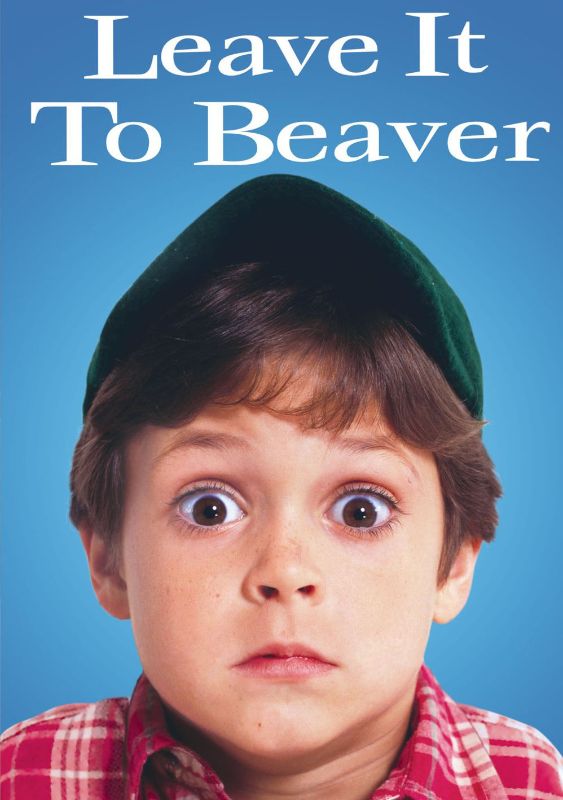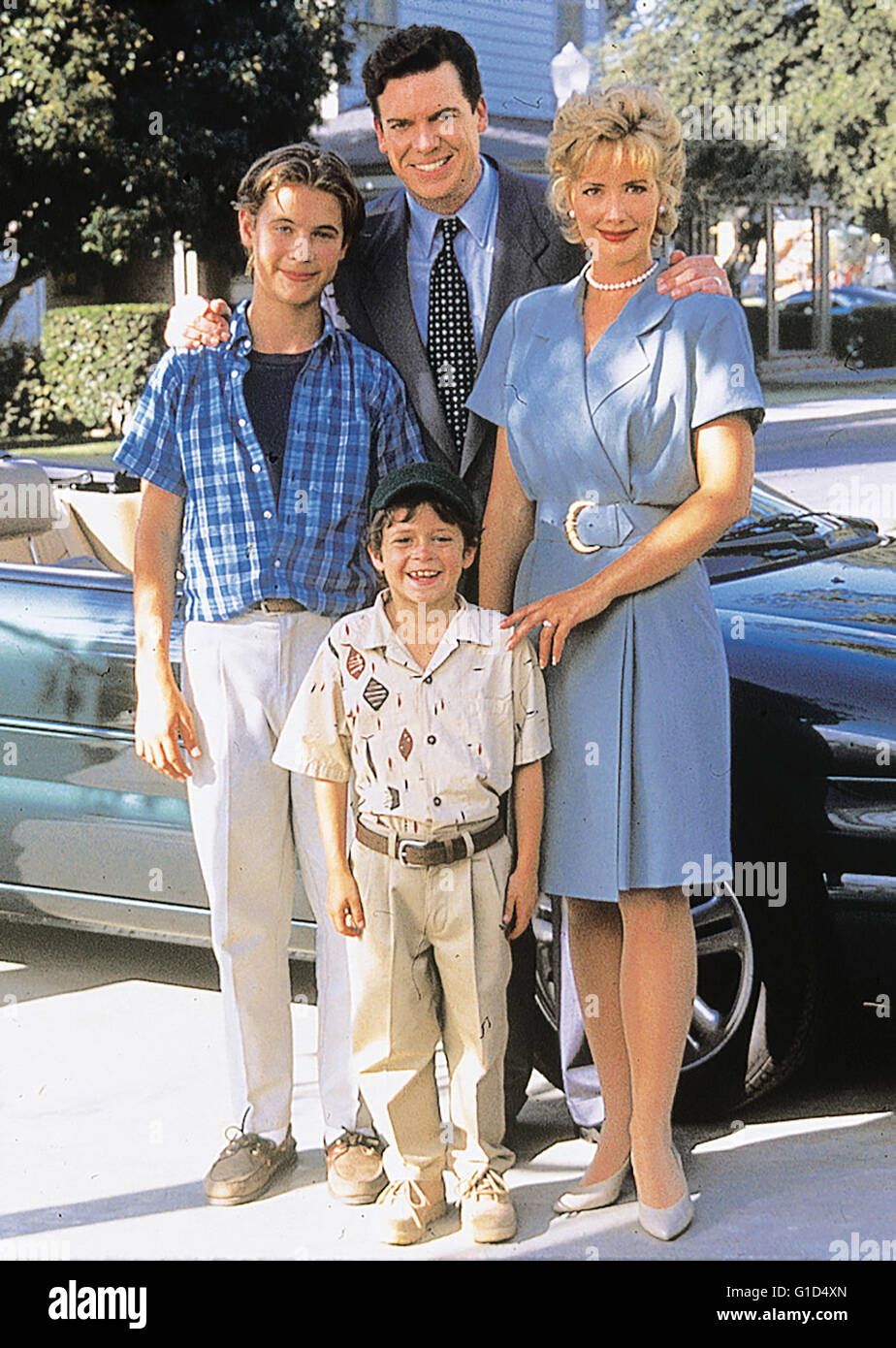Could a seemingly simple television show from the late 1950s and early 1960s hold the key to understanding a generation's aspirations and anxieties? Leave It to Beaver, far from being mere nostalgic entertainment, offers a fascinating lens through which to examine American culture, family dynamics, and the enduring search for an ideal world.
The iconic series, which graced television screens from 1957 to 1963, continues to resonate with audiences, sparking laughter at the escapades of young Theodore Beaver Cleaver and his older brother, Wally. We find ourselves drawn to the gentle wisdom of their parents, June and Ward, and the relatable challenges of suburban life. But what lies beneath the surface of this seemingly innocent portrayal of family values? As we delve into the cultural impact of Leave It to Beaver, we uncover not just a sitcom, but a reflection of the societal shifts and aspirations of a nation grappling with change.
As the show celebrates its sixtieth anniversary, a re-evaluation of Leave It to Beaver reveals it as more than just light entertainment; it served as a cultural touchstone. The show perfectly captured the zeitgeist of its era, reflecting the desires and anxieties of a nation recovering from the Second World War. The post-war period was a time of profound societal transformation. The rapid growth of the suburbs, fueled by government initiatives and economic prosperity, created a physical and ideological landscape where the nuclear family was both idealized and commodified. Leave It to Beaver became a prime example of this trend, offering a comforting vision of domestic stability and moral clarity that resonated deeply with audiences seeking order and predictability after the upheaval of the war.
The show introduced archetypes that quickly became staples of the sitcom genre. The idealized nuclear family – mother, father, and children – was a significant theme, presenting a vision of the perfect household. This portrayal, while comforting, reinforced societal stereotypes. June Cleaver, the dutiful homemaker, epitomized the ideal wife and mother, while Ward Cleaver, the wise and steady father, represented the patriarchal head of the household. Beaver and Wally, in their constant pursuit of mischief and self-discovery, navigated the complexities of childhood within a clearly defined moral framework. Each episode followed a predictable structure, with the Cleavers encountering a problem, learning a lesson, and reaffirming the values of honesty, responsibility, and familial love. This formula, while arguably simplistic, provided a sense of comfort and reassurance to viewers.
The language and symbolism of the show reveal deeper cultural meanings. The term cackerel, for instance, a seemingly innocuous word, holds significance when analyzed in the context of the show's narrative. According to the dictionary, it is defined as a small, worthless Mediterranean fish considered poisonous by the ancients. The aquatic reference itself is noteworthy, and Leave It to Beaver deliberately incorporated such elements, which are often overlooked, to show that nothing is random. The show's creators were consciously crafting a world where seemingly small details contributed to the overall message and theme. The choice of words, the visual cues, and even the subtle nuances of character interactions were carefully orchestrated to convey a particular vision of American life.
Leave It to Beaver distinguished itself from other family sitcoms of its time, such as Father Knows Best, The Donna Reed Show, and Ozzie and Harriet, by focusing on the experiences of children and their unique perspective on the world. While these other shows also portrayed suburban life, Leave It to Beaver offered a more child-centric point of view. The series delved into the everyday trials and tribulations of growing up, from schoolyard squabbles to the complexities of navigating social relationships. This focus on the perspective of childhood made the show particularly relatable and engaging for young viewers. The adventures of Beaver, Wally, and their friends resonated with the experiences of children across the country, making the show a cultural phenomenon.
The program provides a unique snapshot of the 1950s, capturing the essence of social interactions and prevalent ideas of the time. The series, though not a masterpiece of television, accurately represented the decade, offering its audience a glimpse into an idealized, sanitized vision of suburban life. This vision, while not entirely representative of the realities of the time, offered a comforting narrative of stability and order in a world undergoing rapid change.
“Leave it to Beaver” became a cultural shorthand, referencing the show and the ideal it represented. To say that something is Leave It to Beaver meant it adhered to the values of a particular era. The series became an enduring symbol of a bygone era, representing a time when family values, community spirit, and the pursuit of the American dream were central to the national consciousness. The show offered a framework for understanding social dynamics, offering insights into the expectations and aspirations of a society that placed a high value on conformity, respectability, and the pursuit of happiness within the context of the nuclear family.
The show's lasting popularity demonstrates its cultural resonance. Through the lens of Leave It to Beaver, we can understand the changing landscape of family values, the evolution of societal norms, and the enduring human desire for connection and belonging. The show's enduring appeal serves as a reminder of the power of television to shape and reflect our understanding of the world.
The show's impact extends beyond mere entertainment. The show's creators and cast members, especially Jerry Mathers, Barbara Billingsley, Hugh Beaumont, and Tony Dow, became cultural icons. Their portrayals of the Cleaver family shaped the public's perception of the ideal family unit. Their performances were more than just acting; they were a reflection of the social values of the era. In the context of the 1950s, such portrayals helped define what was seen as the normal standard.
The series' influence extends to our contemporary culture. The characters of Leave it to Beaver have been revisited in spin-offs, films, and countless parodies. The show’s themes of family, friendship, and growing up continue to resonate with audiences, reminding us of the timeless values of love, loyalty, and the importance of community. The show's legacy endures, not only as a nostalgic reminder of a simpler time, but also as a cultural artifact that continues to offer valuable insights into the American experience.
The show serves as an excellent example of how the medium of television can capture and amplify the values of a society. The Cleaver family's experiences, from Beaver's misadventures to Wally's teenage concerns, provided a framework for children and adults alike to understand their own place in the world. Through its relatable characters and enduring themes, Leave it to Beaver continues to provoke introspection on American values.
As we reflect on the legacy of Leave It to Beaver, we are reminded that the show’s significance extends far beyond its comedic appeal. The show embodies the societal aspirations of a nation, serving as a cultural artifact that continues to illuminate the American experience. The enduring appeal of “Leave It to Beaver” is a testament to the power of storytelling to shape our understanding of the world and ourselves.
The show's enduring legacy underscores its place in American history. It remains a valuable resource for understanding the cultural values, social dynamics, and the pursuit of an idealized world. As we continue to navigate the complexities of the modern world, “Leave It to Beaver” invites us to reflect on the enduring human desire for connection, belonging, and the simple joys of family life.
Here's the table with information of the TV show Leave It to Beaver:
| Category | Details |
|---|---|
| Title | Leave It to Beaver |
| Original Run | October 4, 1957 – June 20, 1963 |
| Network | CBS (1957–1958) and ABC (1958–1963) |
| Created by | Joe Connelly, Bob Mosher |
| Starring | Jerry Mathers, Barbara Billingsley, Hugh Beaumont, Tony Dow |
| Setting | Mayfield, a fictional suburb of an unspecified city. |
| Theme | The everyday adventures of Theodore Beaver Cleaver and his family. |
| Notable Episodes | The Birthday Party, The Haircut, Beaver's Tooth |
| Cultural Impact | Iconic representation of the American suburban family, cultural touchstone for the 1950s and 1960s. |
| Themes | Family values, childhood experiences, the challenges of growing up, social expectations. |
| Legacy | Enduring appeal, spin-offs, films, and parodies; reflection of societal values. |
| Awards and Recognition | Nominated for multiple Emmy Awards. |
| Genre | Family sitcom |
| Notable Elements | June Cleaver's pearls, Ward Cleaver's advice, Beaver's innocent mistakes, the iconic opening theme music. |
| Production Company | Kayro Productions |
| Number of Seasons | 6 |
| Number of Episodes | 234 |
| Reference | IMDB |



